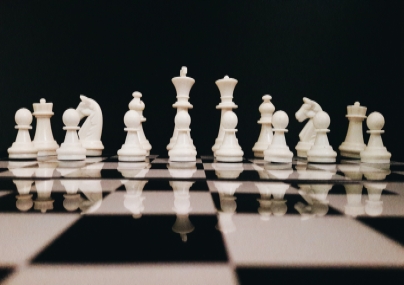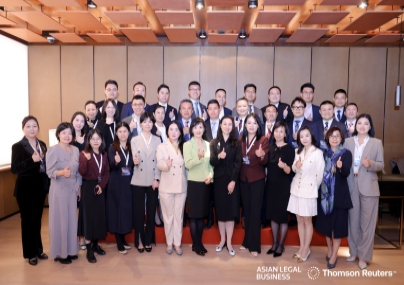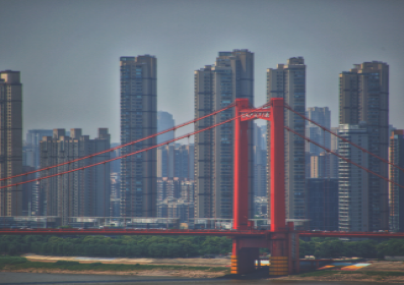越来越多的律师事务所重视起了办公室的空间设计。有律师指出,律所办公环境的优化不但成为了高质量法律服务的“标配”,甚至是律所发展战略的一部分。专业设计师指出,优质的律所空间设计应兼顾工作区域的舒适度,以及律所理念的融合与传达。而受疫情影响,安全性也成为了重要指标。
不久前,一家今年刚刚搬迁新址的律所管理合伙人在采访中告诉ALB :新的办公环境具有极高舒适性,满足了律所的业务需求,对团队产生了非常积极的影响,律师们普遍认为在新环境中能够开阔思维、激发主观能动性,甚至提升精神面貌。
在中国,物质生活水平不断提高的体现之一,即人们对于舒适且具备审美性的居住、工作空间的追求。那么,对于“何为好的律所空间设计”,是否存在标准答案?
在专业设计师看来,想要实现高度的舒适感,首先必须在设计中考虑到工作者的多维度感官。
“好的办公空间能够在视觉、听觉、触觉和健康等方面体现细致的人文关怀。” 做好建筑设计有限公司的设计总监曾俊杰告诉ALB。
他进一步解释道:“视觉灯光色温应保持柔和,从而达到最佳舒适度。灯具应采用二次光源,避免灯光直接投射到人,光照度根据不同区域的使用功能来匹配。”
听觉和触觉方面同样很讲究。“听觉方面,可以通过吸音板、软包和地毯等材料,可以有效减少噪音,有利于律师提升工作专注度;触觉方面,人均新风和空调冷量是重要的衡量标准;而考虑到工作者的健康,办公场所应该增加绿植软装,多使用环保材料。”他说。
除了舒适度外,许多律所在选择办公室设计方案时,非常注重将律所文化和理念融入到设计之中,以便更好地突出律所特点、展示更深入的形象。这一点和中国律所近年来强化品牌辨识度、明晰品牌调性的做法不谋而合。
尽管这样的要求给设计带来了挑战,曾俊杰认为,其实通过高效沟通,就可以很好地理解律所、展示律所。他表示:“我们对律所经营模式、特点进行理解的过程很大程度上取决于我们和律所的沟通。”
但他也指出:“律所通常由不同的合伙人组成,每人合伙人对设计有不同的看法,因此我们建议成立一个专案设计小组委员会,统一沟通对设计的想法、律所的功能需求和风格要求等。”
对此,曾俊杰还分享了一个有趣的案例。
“我们的一位客户是一家历史悠久的律所,他们对中国文化有着很深的理解和沉淀,因此,在为其设计新办公室时,我们运用了‘百鸟归巢’这个理念。天花的三角形代表了鹏的翅膀,将旧所的‘灋’字刻在前台,作为一种精神的传承;同时,由于新办公室选址在CBD高层甲级写字楼,四周景色尽收眼底,在和客户商议后,我们将楼层四角设计为‘梅、兰、菊、竹’主题的协作区,让每位员工都能享受最好的景观。”
当下,受新冠疫情影响,如何为员工提供更安全健康的办公环境,成为了许多律所关心的问题。自复工以来,许多律所在空间布局方面采取了低密度办公、保持物理距离和限制办公室区域使用时间等措施。
除了这些必要的防控措施,曾俊杰还提出了灵活协作多样化办公空间的建议:“由于律师工作对私密性空间的要求,律所通常设置大量律师办公室、会议室,而且办公区的人员也较密集。因此我建议疫情期间,律所通过公共空间及内部员工咖啡厅来设置多样化的办公空间,包括开放式、封闭式及休闲移动式的办公空间,以进行工作上的协同合作。这不但高度契合了当下的新兴工作模式,令办公相对分散,还能在有限的空间里确保随时沟通交流,保证工作效率。”
The optimal law firm office design is a combination of comfort, branding and safety
Today an increasing number of law firms are putting greater emphasis on the design of their offices as they feel it is crucial to their reputation and business growth. Designers say that the ideal law firm office design should combine comfort with elements of the law firm’s culture; and with the pandemic happening. safety has also become an important factor.
In China, one of the manifestations of the continuous improvement of material living standards is people's pursuit of comfortable and aesthetically pleasing living and working space. Indeed, a well-designed office can make a big difference to the staff. A managing partner of a law firm, which just moved into a new office this year, shared with ALB China that their new office had made the lawyers feel more motivated and energetic.
But what is “good” law firm office design, and how is it different from designing other types of organisations?
Professional designers feel that at the very least, office design should cater to people’s most basic needs. “A good space design should be able to show care for people’s sight, hearing, feeling and health,” says Ken Tsang, director of design at Joe Ho Associates Limited.
He further explains: “Visual light color temperature should be kept soft to achieve the best comfort. Secondary light sources should be used to avoid direct projection of light onto people. The illumination should be matched according to the functions of different areas. When it comes to hearing, materials such as sound-absorbing panels, soft bags and carpets can effectively reduce noise, which is conducive to the concentration of lawyers' work. Speaking of feeling, per capita fresh air and air conditioning cooling is an important measure, whereas for people’s health, offices should increase the green plant soft outfit, use more environmental protection material.”
In addition to comfort, many firms can choose to incorporate the firm's culture and philosophy into their office designs in order to better highlight their identity and present a more impressive image. This ties in with Chinese law firms' efforts in recent years to strengthen brand recognition and make branding consistent.
Although such requirements can pose a design challenge, Tsang believes that effective communication is the key to delivering the desired office. "Our understanding of the culture and characteristics of the firm depends very much on how we communicate with the firm. A law firm has multiple partners, each of whom has different views on design. Therefore, we suggest setting up a project design subcommittee to communicate ideas on functional and style requirements of the firm."
Tsang also shares an interesting case. "One of our clients is a long-established law firm with a deep understanding and heritage of Chinese culture, so we applied the concept of 'birds return to their nests' in designing their new offices. The ceiling triangle represents the wing of a giant roc, and we carved the character ‘灋’ from the old office at the reception as a spiritual inheritance. Also, the new office is located in a high-rise Grade A office building in the Beijing CBD, with all the surrounding views under feet. Therefore, after discussion with the client, we divided the four corners into cooperation areas respectively under the themes of ‘plum, orchid, chrysanthemum, bamboo’, giving people a better experience of the view.”
At present, affected by the pandemic, how to provide employees with a safer office environment has become a concern for many law firms. Since returning to work, many firms have resorted to low population densities, physical distancing and limiting time spent in office areas.
To aid them in their goals, Tsang also proposes flexible, collaborative and diversified office spaces. He explains: “Lawyers' work has high requirements on privacy, so law firms usually set up a large number of lawyers' offices and meeting rooms, and the office area is also densely staffed. Therefore, I suggest that during the epidemic, law firms use public spaces and internal cafes to set up a more diversified office space, including open working area, closed working area and recreational space to support a safer and more effective use of office. It highly matches with the current new working mode and people can communicate better in a limited working space while their safety is guaranteed.”
To contact the editorial team, please email ALBEditor@thomsonreuters.com.


